How, What, When, and Why You Should Trim Your Onion Seedlings
If you start onions from seed (or most anything in the allium family), trimming them should be part of your regular care and maintenance plan. It’s not at all hard to do, but it will give you bigger, better, stronger plants and produce.
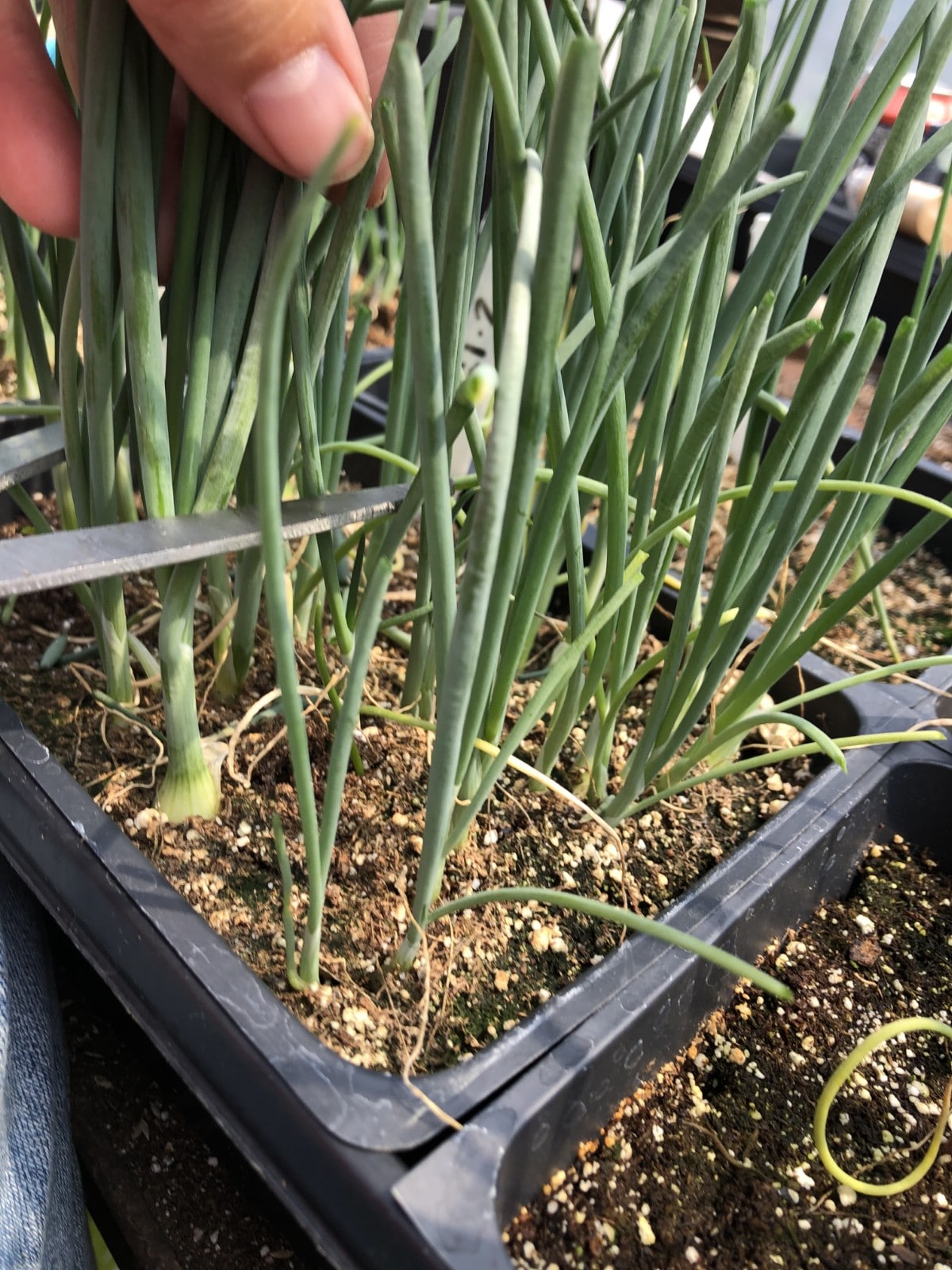
Jump to:
Growing Onions from Seed
There are many advantages to starting onions from seed (and these all go for leeks and shallots, too).
Starting onions from seed is the most economical way to grow onions—it is cheaper than buying onion starts or bulb sets. You can grow a large quantity of onions from seed for just a few dollars.
Starting onions from seed also gives you greater flexibility in variety. You are not limited to the few types of onions that your supplier or local garden store carries. Any onions that you can find seed for, you can grow. This is especially beneficial if you like heirloom or open-pollinated type plants; you are less likely to find these more specialty varieties available in bulbs and sets.
It’s Easy to Grow Onions from Seed
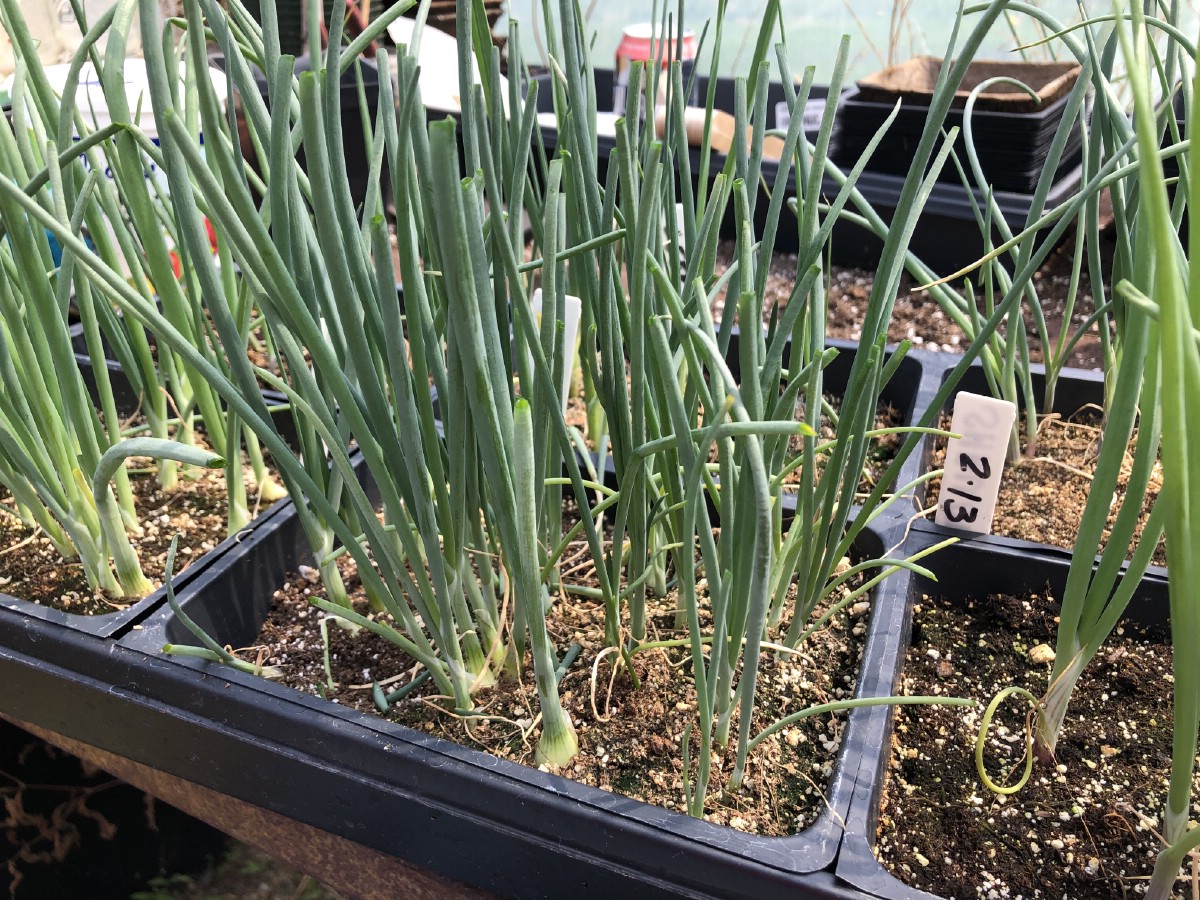
Onions are easy to grow from seed and are easy to maintain until transplant time—they do not require the up potting and transplanting that most plants do and you can grow your seeds closely in planting trays to save time and materials. There’s no need (and no point) in using multi-cell packs for individual plants. Just plant in rows in any size open planting trays (or even recycled/upcycled square deli containers or similar containers).
Start Your Onions Early
One thing to note—onions take many months to reach transplant size when growing from seed. In most locations, they need to be started indoors to maximize yield. It is recommended they be started three to four months before transplanting outside.
Ideally, onion tops should be close to the diameter of a pencil in size by the time they move into your garden. When it’s time to plant onion starts outside, harden off the whole tray, then separate and set the young plants in the ground with the bulb buried to the top of the young bulb.
Why Trim Onion Seedlings or Transplants?
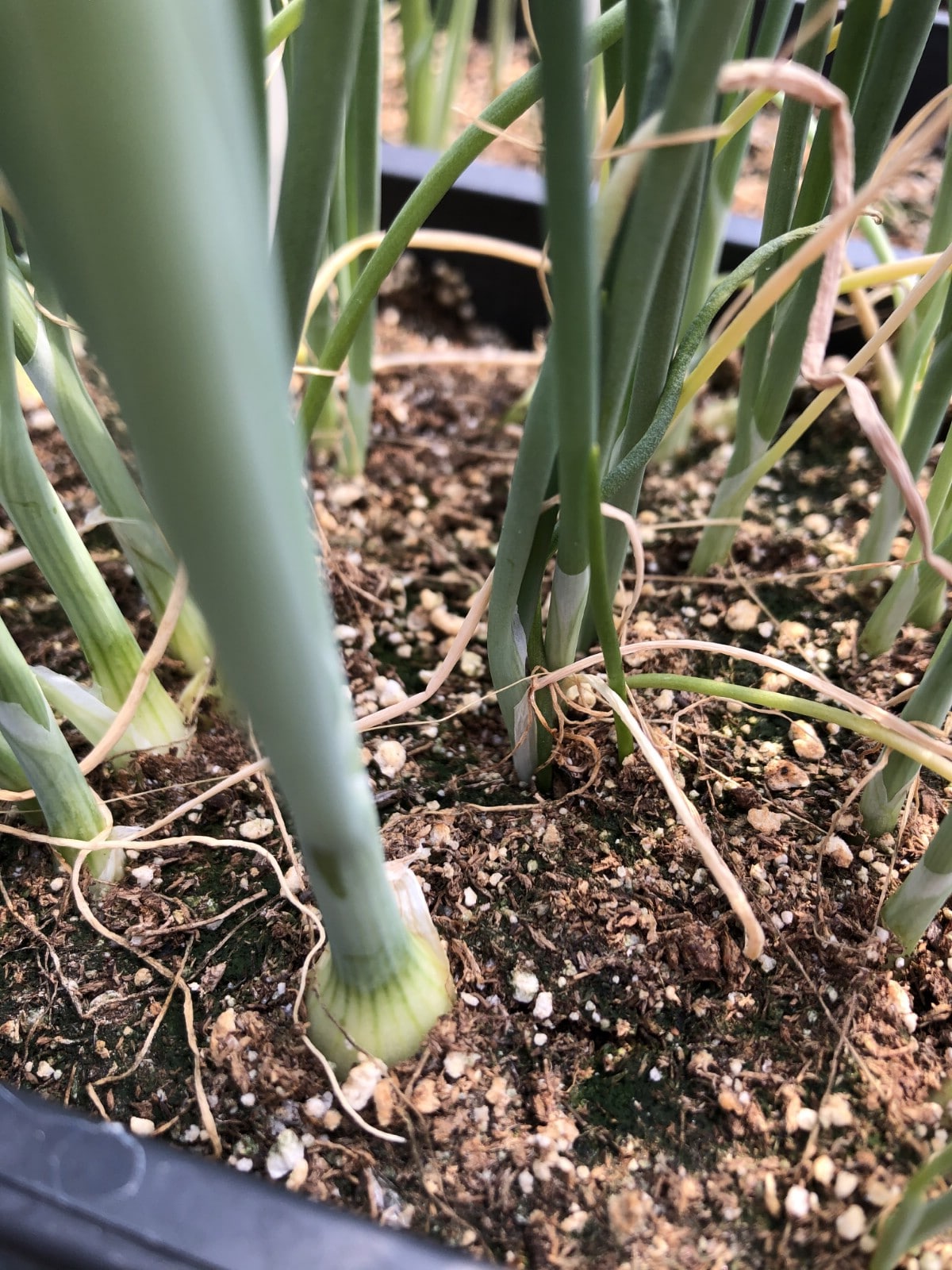
To help get your onion starts to a strong and viable size, ready for transplant into your garden, it’s a good idea to trim them periodically while they are growing.
Better Roots, Bigger Bulbs
Trimming while seedlings are young is better for root and bulb formation. Cutting off the top green growth forces more of the plant’s energy into the root system and also the forming bulb just above it (onions bulbs are actually the base of the leaf system with roots growing from the base of the bulb). Trimming seedlings results in plants with more vigor, more root development, and eventually in larger bulbs—larger onions!
Early trimming will also translate into thicker and stronger greens that are more suited to life in the garden and the variations of wind and outside weather.
Maintained Starts are Easier to Plant
Finally, when you trim the greens on onion seedlings, you keep the greens from becoming overly long and tangled. This makes them easier to prick out and pull apart at planting time and easier to plant, too. It also minimizes damage to the small transplants.
What Onion-Type Transplants Need Trimming?
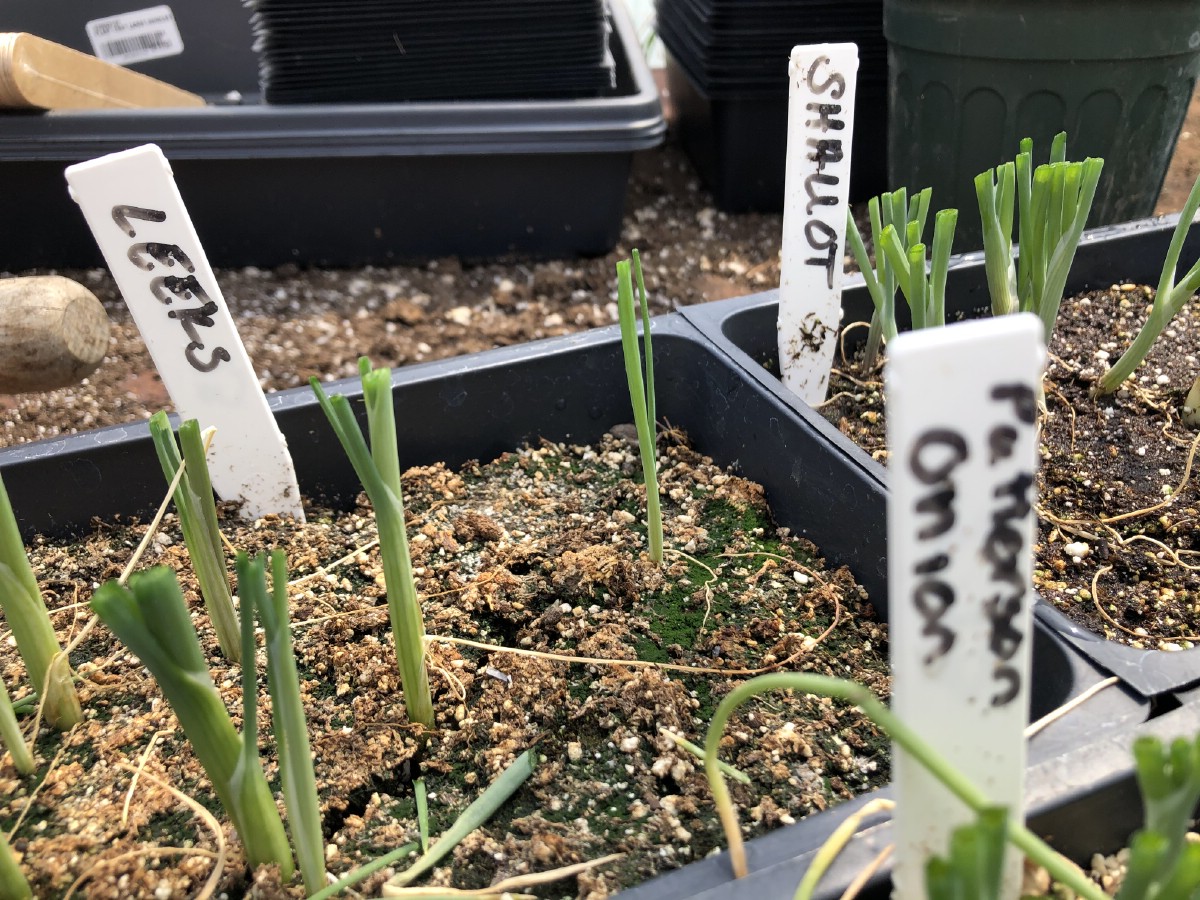
Almost any plant in the allium family (the family of plants that onions belong to) that is started indoors will benefit from trimming. This includes any variety of onions (and there will be many to choose from now that you can start from seed!). It also includes shallots and leeks.
Even alliums that do not have a thick base or real bulb, like chives, can benefit from trimming if their growth becomes long and leggy prior to planting out; doing so will encourage thicker greens and better root growth.
When to Trim Onion Starts
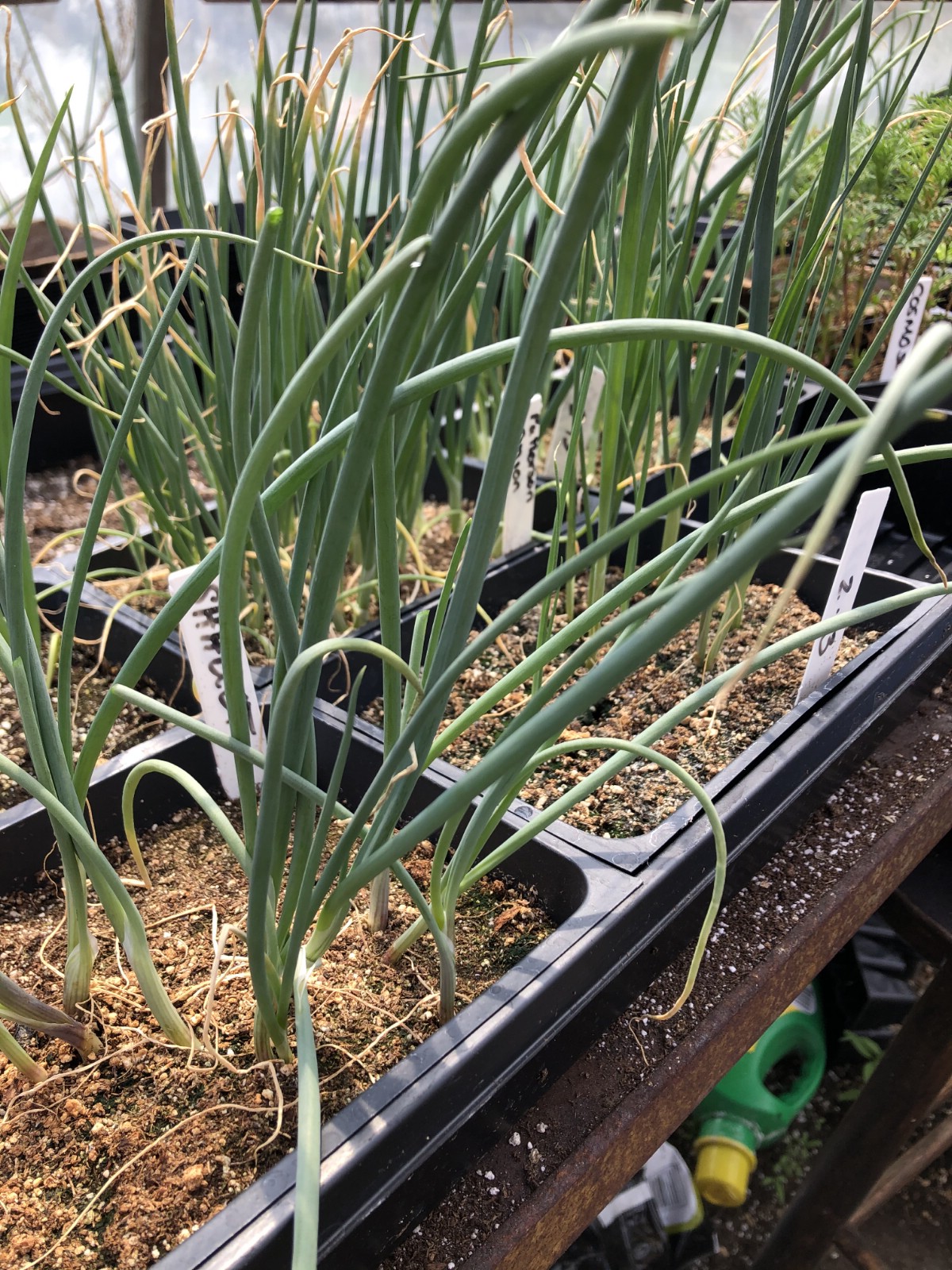
You should trim your onion starts (or leeks or shallots) whenever their greens become long and start to tangle (or even better, just before they start to tie themselves up!). Around five or six inches is the right length to start trimming your onion seedlings.
If your onions’ tops are already beyond that length, no worries—it is still perfectly okay to trim greens that have gone on the long side, even if they are seven or eight inches or more. Catching them before they get that long is better because it captures that plant energy without wasting it on unneeded early greens and also prevents tips from getting too close to grow lights and/or starting to brown at the tip. You want to keep your onion starts nice and green and healthy all the way through from germination through transplant and really until they naturally die off at harvest time.
How to Trim Onion Seedlings
Trimming young onions is very easy. It only takes a few minutes of your time and a good pair of scissors. Here’s a look at how to trim onion transplants:
What you’ll need: A clean bowl (to collect the greens) and a sharp pair of scissors. Longer blades will be easier to use than short scissors.
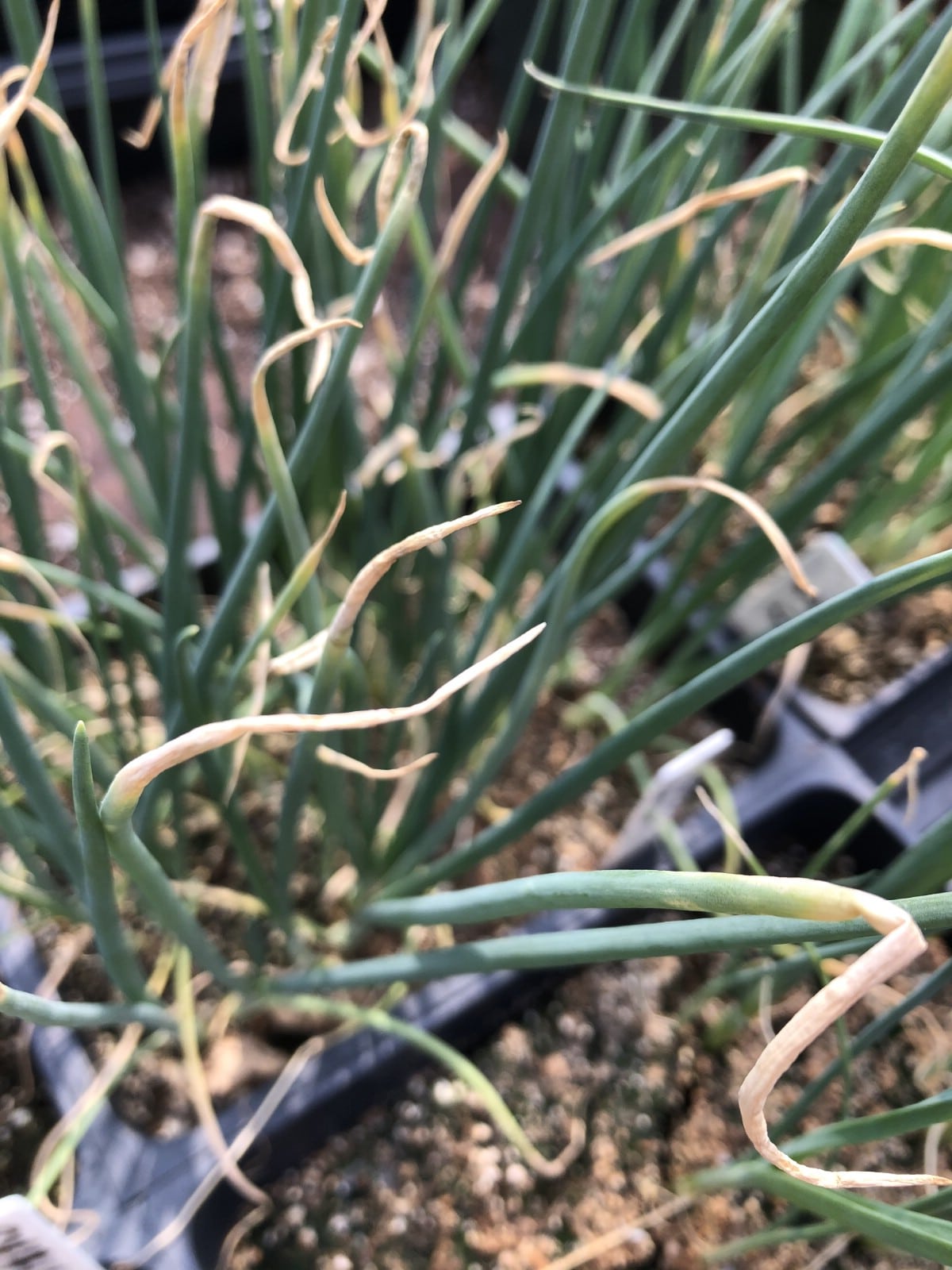
1. If the onions have any browning or dead tips, it’s best to trim these off first. This is optional but it will give you cleaner greens at the end (you’ll see in a moment why this might matter to you!).
2. With all the dead tips removed, hold several onion tops in one hand and use your scissors to cut low on the plant. Just lightly hold onto the tops and do not pull. You want to leave the onions between one and two-and-a-half inches tall at the base.
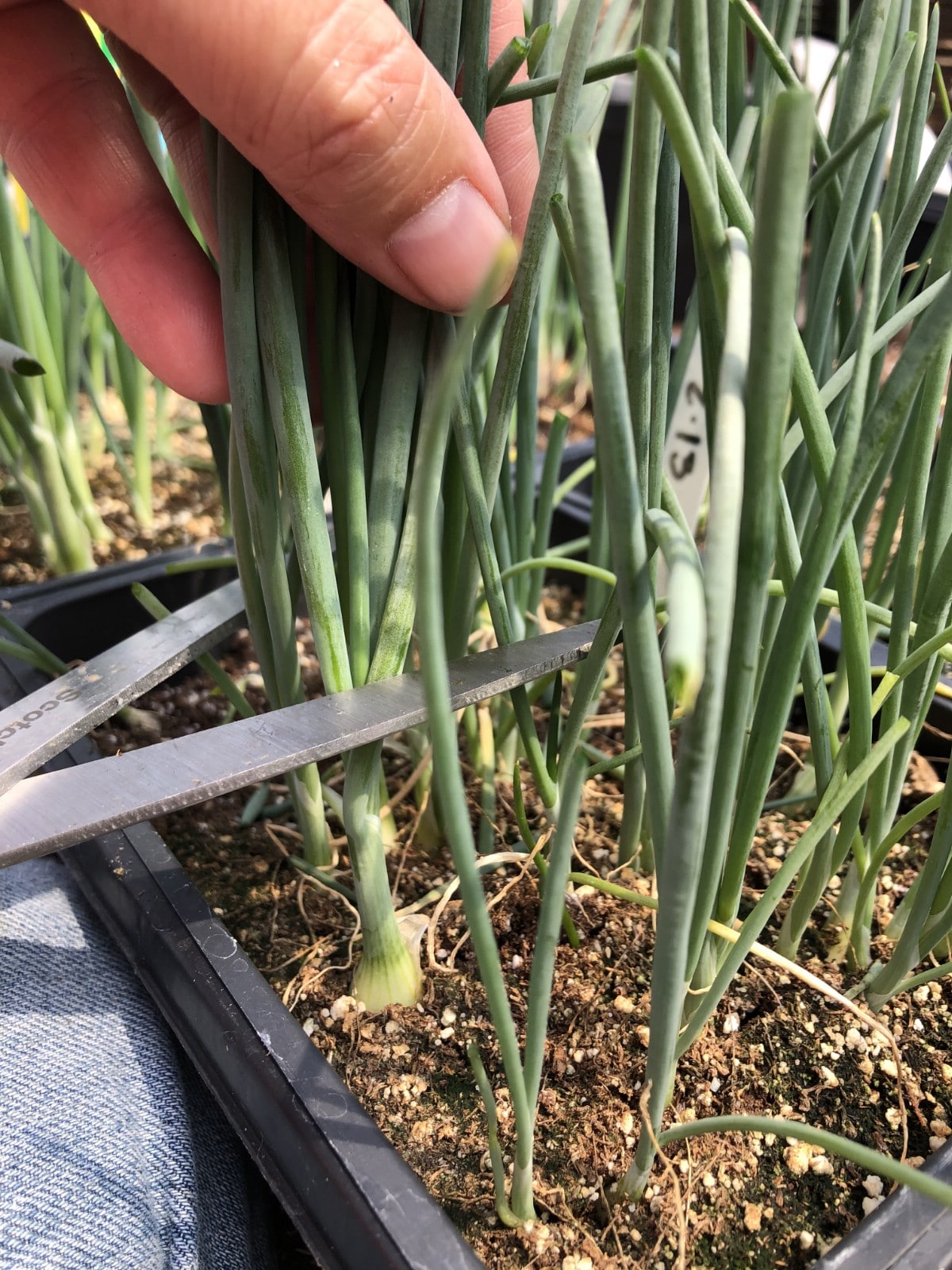
3. Use sharp scissors, not a knife or dull tool, because dull implements or implements that require sawing and tugging are likely to uproot the small plants. If that does happen (because sometimes things do happen), tuck the uprooted bulb back in and cover it with dirt, making sure the tray also has adequate water to feed the disturbed roots.
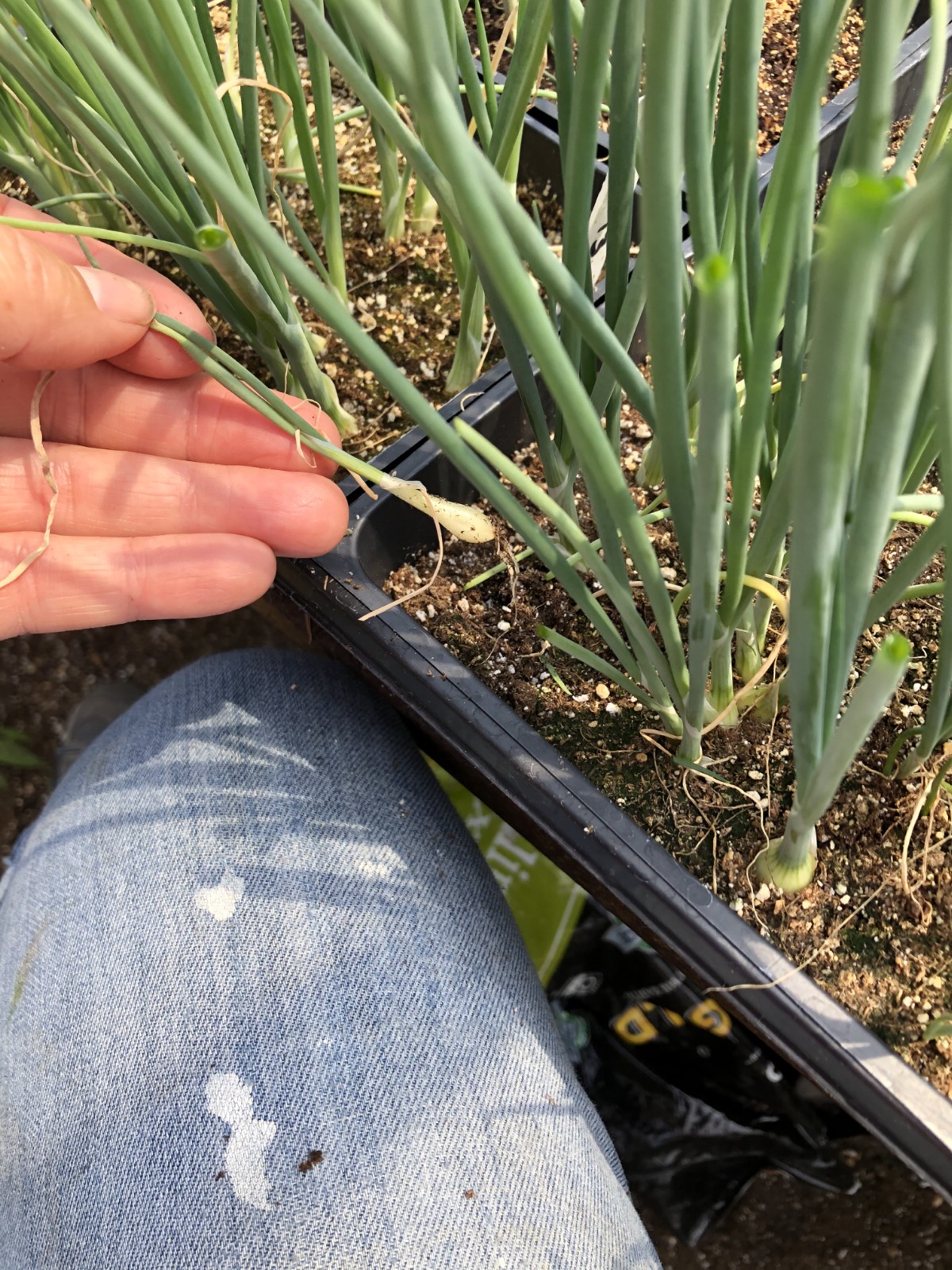
4. Do not cut the greens off completely—leave that 1 ½ to 2 inches of tops on the plants. Remember these leaves are their food source—the fuel for the growing onions!
And that is it. That is all there is to trimming your onion sets and setting them up for stronger, more vigorous growth.
Eat Your Onion Waste!
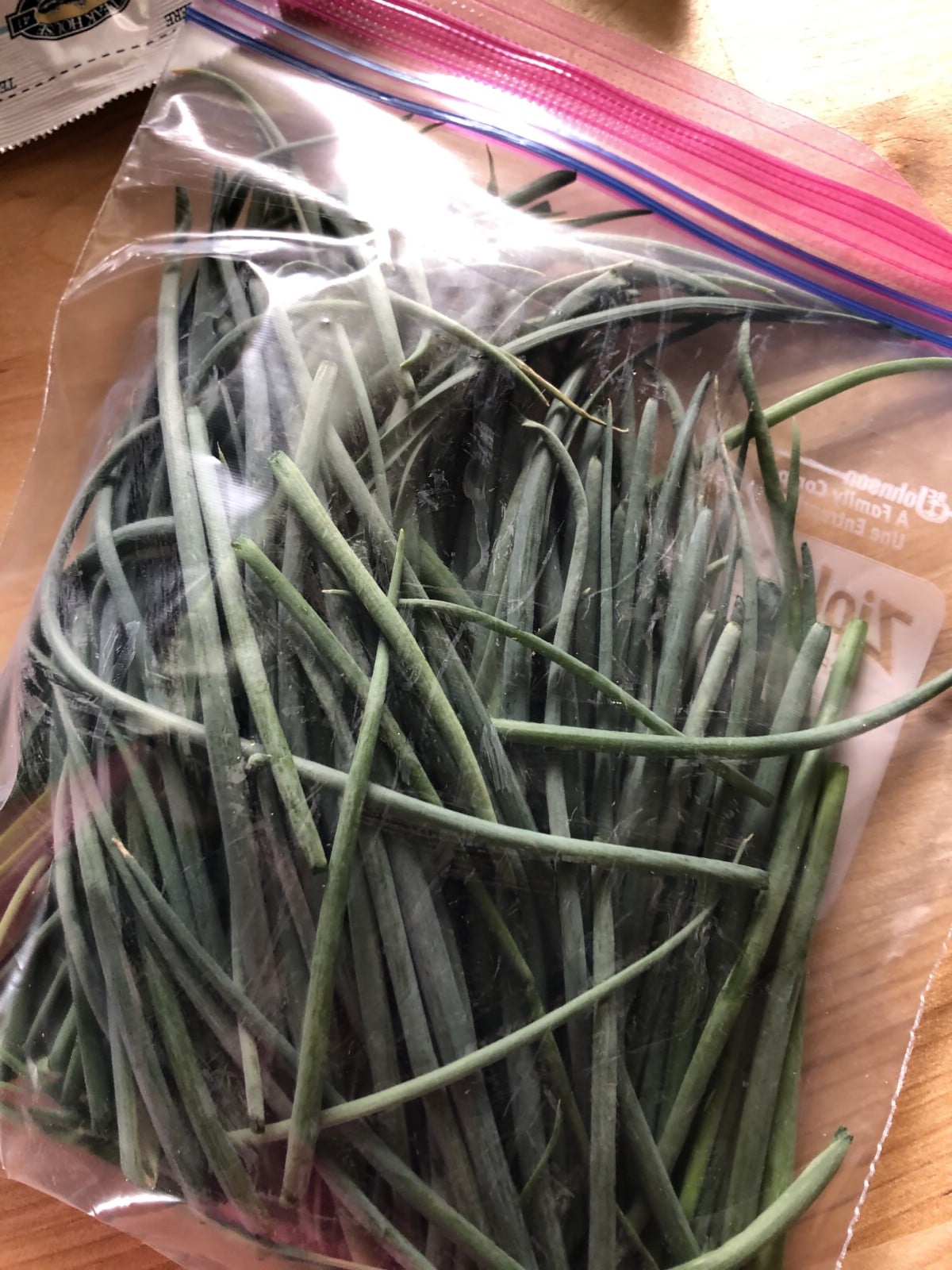
The trimmings from your onion tops are 100% edible—and are quite delicious!
Save those trimmings in a clean container as you cut (this is why it’s recommended to nip off the brown and dead tips first—because now you have nice, clean cuttings to keep and eat and you won’t have to sort through them to weed out the brown bits). Cuttings can be kept in a baggie in the refrigerator and saved for many days.
Reserved onion trimmings can be used fresh or used for cooking. You might also choose to dry them for use as a dried herb or onion. Use the trimming anywhere you would use an onion, green onions, scallions, bunching onions, or chives.
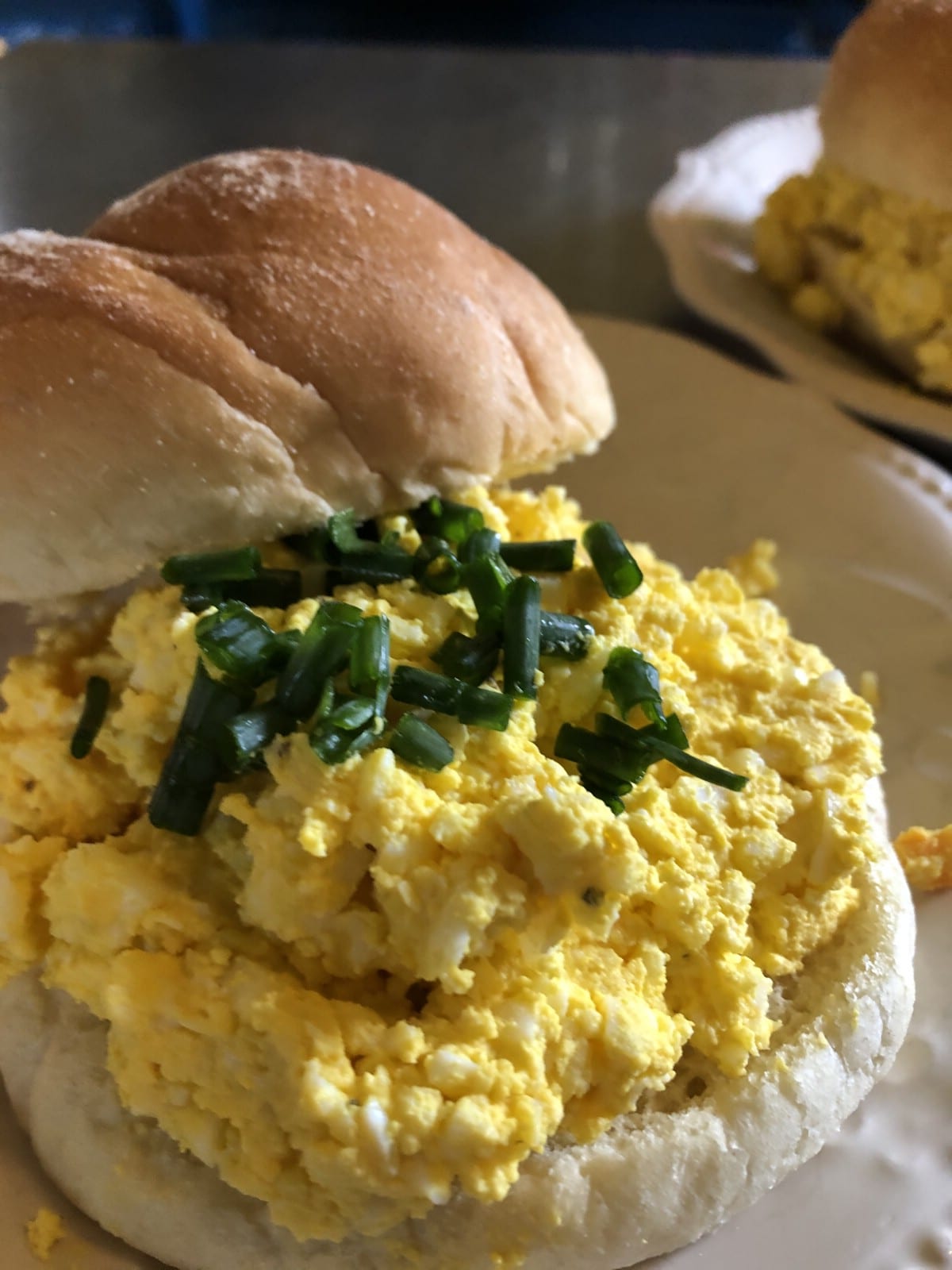
The flavor is fresh and delightful and often surprisingly strong! A little can go a long way!
Maintaining Onion Starts Until Garden Transplant Time

Your onion tops will continue to grow after trimming. In fact, the tops may regrow to five or more inches several times before it is time to plant them outdoors.
Repeat this process and trim your onions’ tops any time they get to be around five inches tall, or any time they become long and tangled. Tangling should be less of an issue with regularly trimmed and maintained tops because the greens themselves will become stronger, thicker, and less apt to bend and tangle.
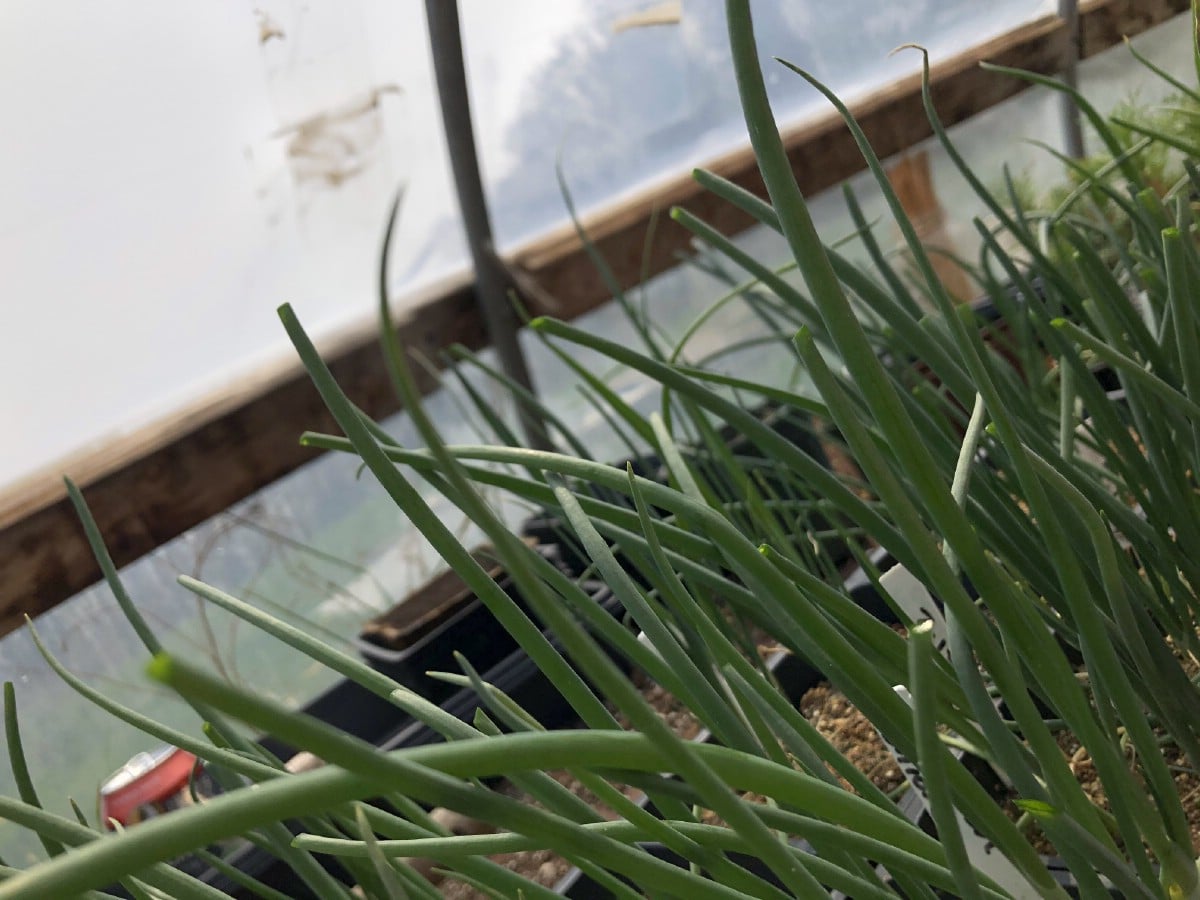
A Little Longer at Planting Time is Wise
Do keep in mind, though, that at planting time it will be easier for you to handle and plant onions with a bit of length to them; so, if you need to trim your onions when it is getting close to time to plant them outside, you may not want to cut them back all the way to two inches.
At that time, leave them closer to six inches to make them easier to work with and more able to survive transplanting.
Don’t forget—before you plant your onion starts outside in the garden, they, like all other plants started indoors, need to be hardened off.
Onion Growing Tips, Tricks, and Tidbits

Here are a few final tips to make growing and planting onions a little easier for you.
Onions Don't Mind Shallow Soil
Onions can be grown in fairly shallow soil. It is not really important for the bulb itself to stay submerged or covered in soil, either. The only part of the plant that matters in terms of soil submersion is the root, and which grows from the bottom of the bulb. The bulb of the onion is actually the plant’s base—part of its leaf system. The bulb is not what uptakes water and nutrients for the plant.
It is not uncommon for onion bulbs to push their way up out of the ground as they grow. If this happens, don’t worry. You do not need to re-cover the bulb with dirt. As long as the roots remain below the soil and the soil is deep enough to house and feed the onion plant, your onions will do just fine.
Leeks Benefit from Light Hilling
Leeks, on the other hand, will benefit from the base of the plant being covered a few times throughout the growth period. Leeks are basically one big long, thick stem with roots. They do not form a bulb. Bringing some dirt up around the lighter, whiter part of the base will help keep leek plants upright, growing straight and strong. Hilling like this helps keep the roots covered and anchored. When hilling around the base of leeks, do not cover the lower leaves (just draw up some dirt around the white part of the base).
Companion Planting with Onions
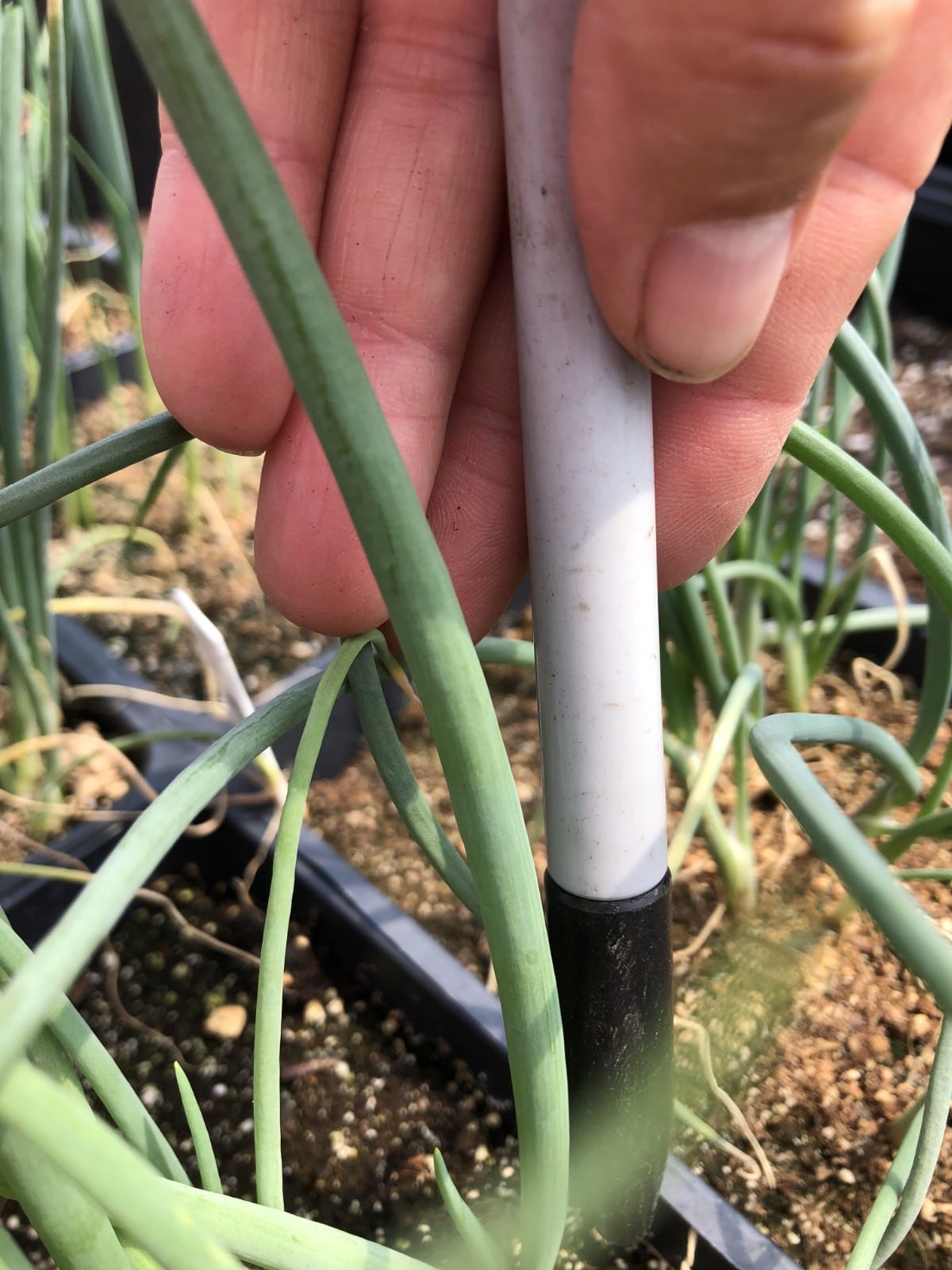
Onions make very good companion plants for a large number of common garden vegetables. Their smell tends to deter and confuse many garden pests, so planting onions interspersed through the garden or in rows near plants that are targets for pests can help control insect invaders.
Controlling insects often, in turn, helps to control garden disease because insects are frequently the carriers and spreaders of diseases in the garden.
Plants that benefit from companion planting with onions include carrots, lettuce, broccoli, cabbages, cauliflower, tomatoes, and more.
Beware of Planting Onions too Close to These Plants
Peas and beans, however, do not like having onions as close neighbors, and planting onions too close to peas and beans can stunt their growth.
Overall, onions are easy to start and grow even from seed. They’re a healthful and beneficial plant in more ways than one, for both you and the plants in your garden. With these tips and trimming techniques, you’re well on your way to growing bigger, better, tastier onions in your kitchen garden.

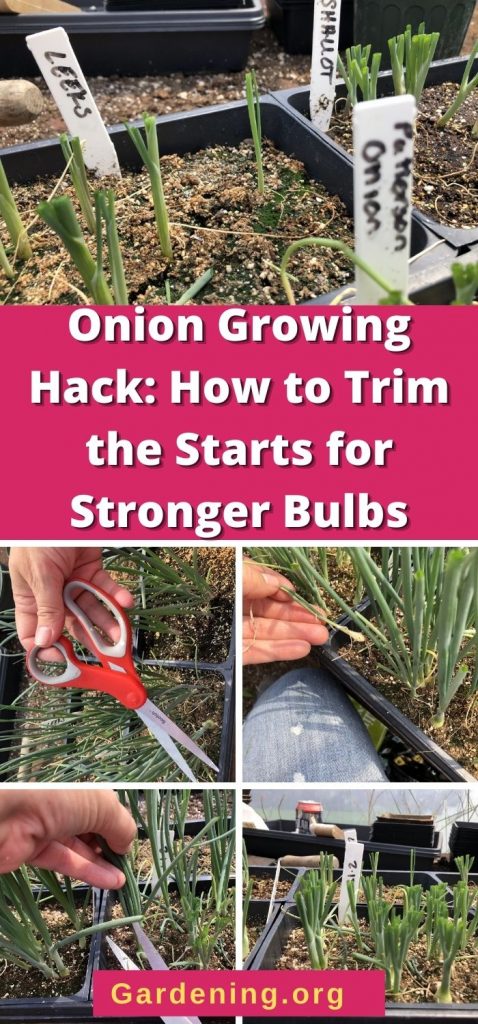
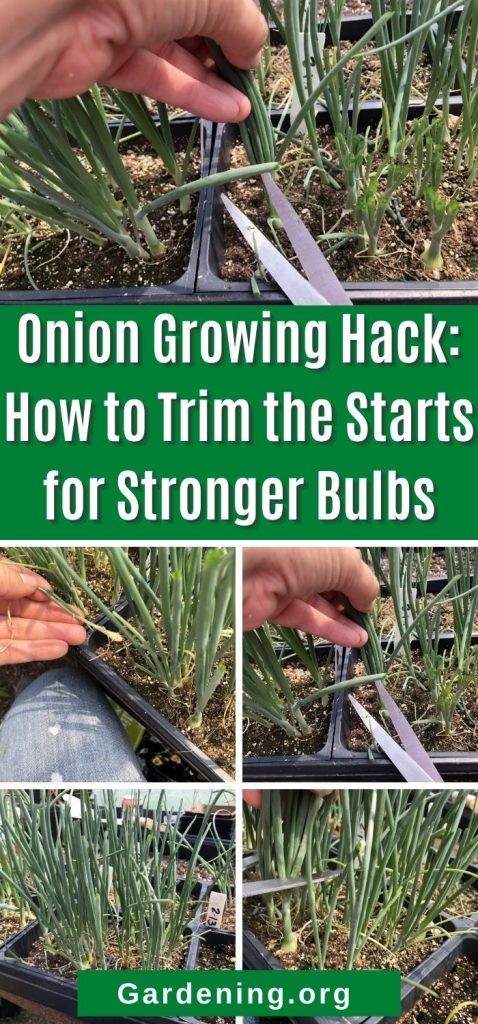
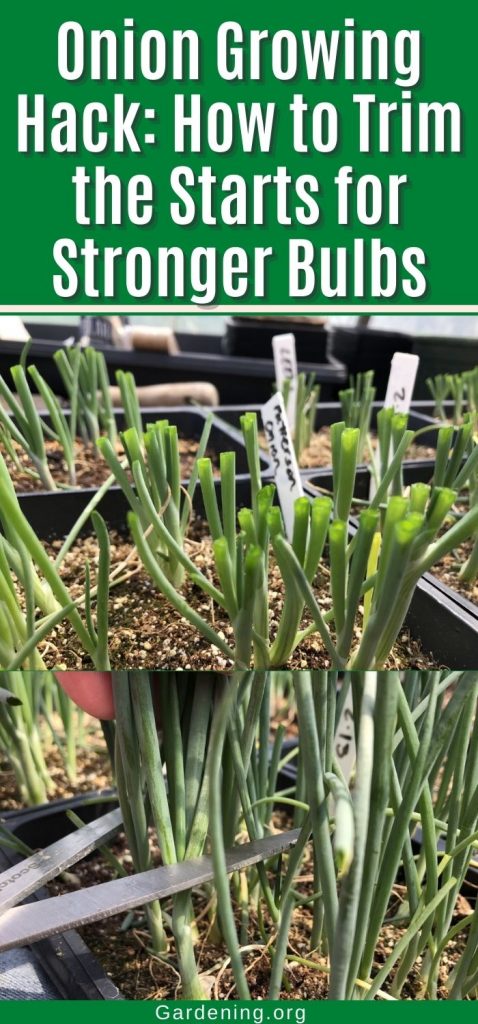


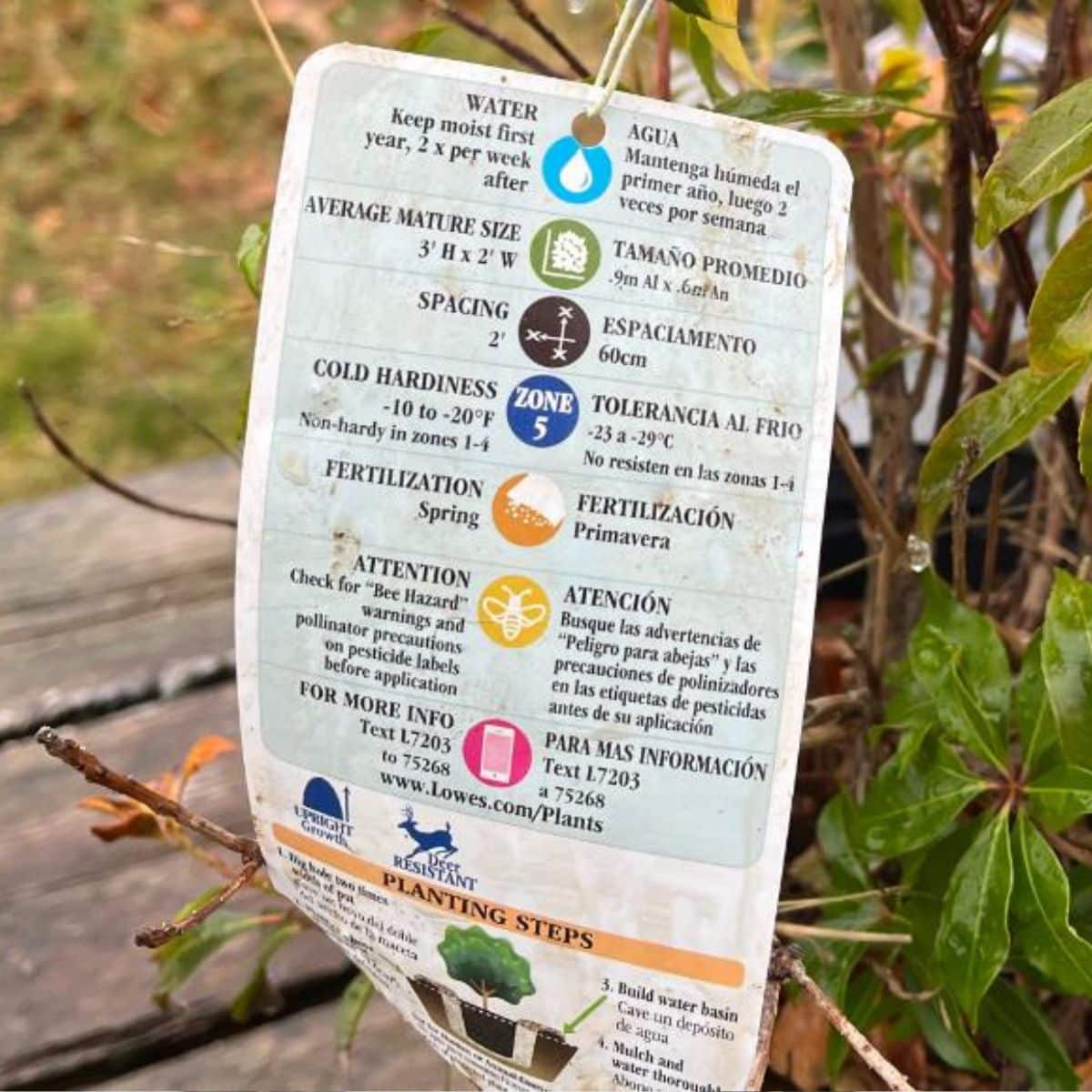
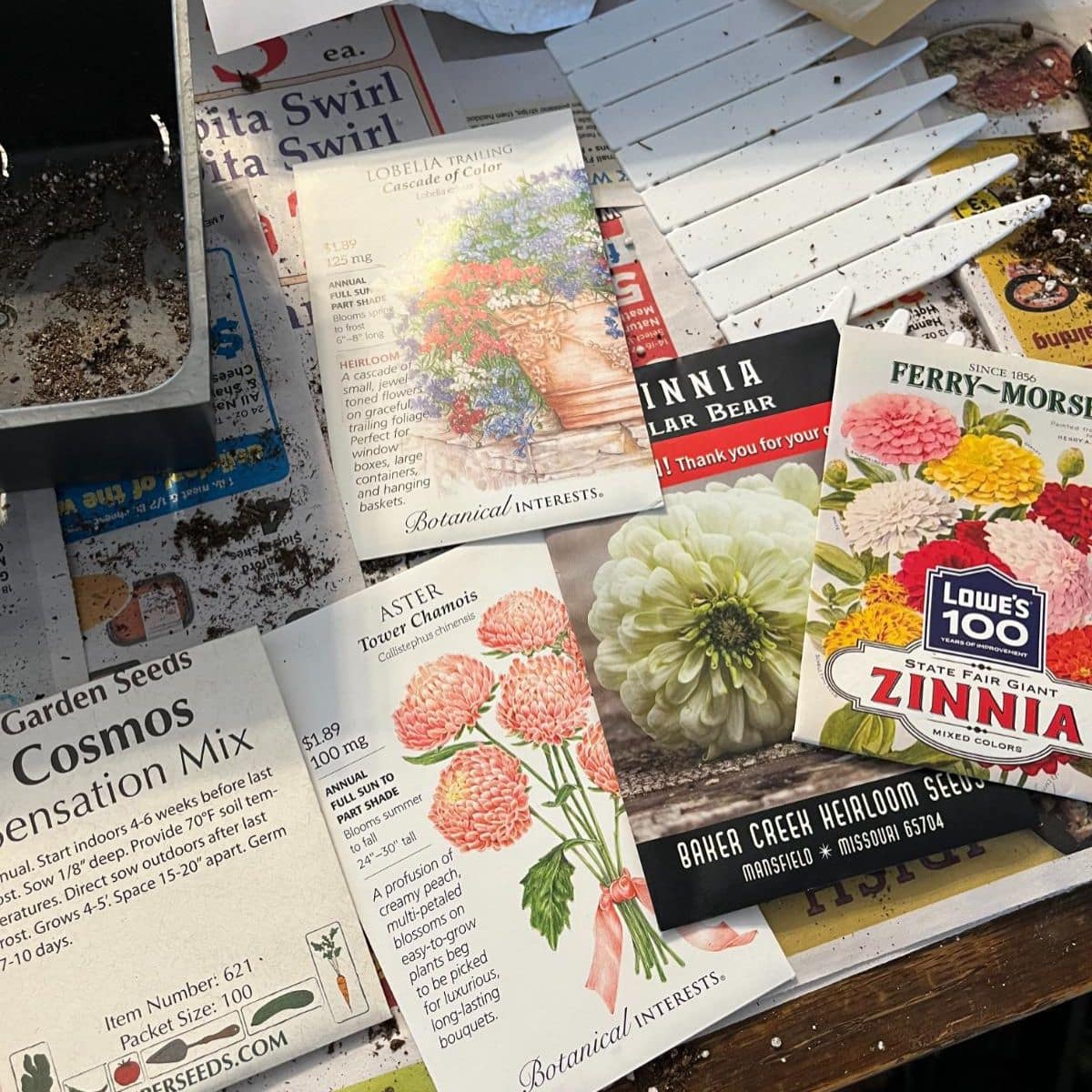
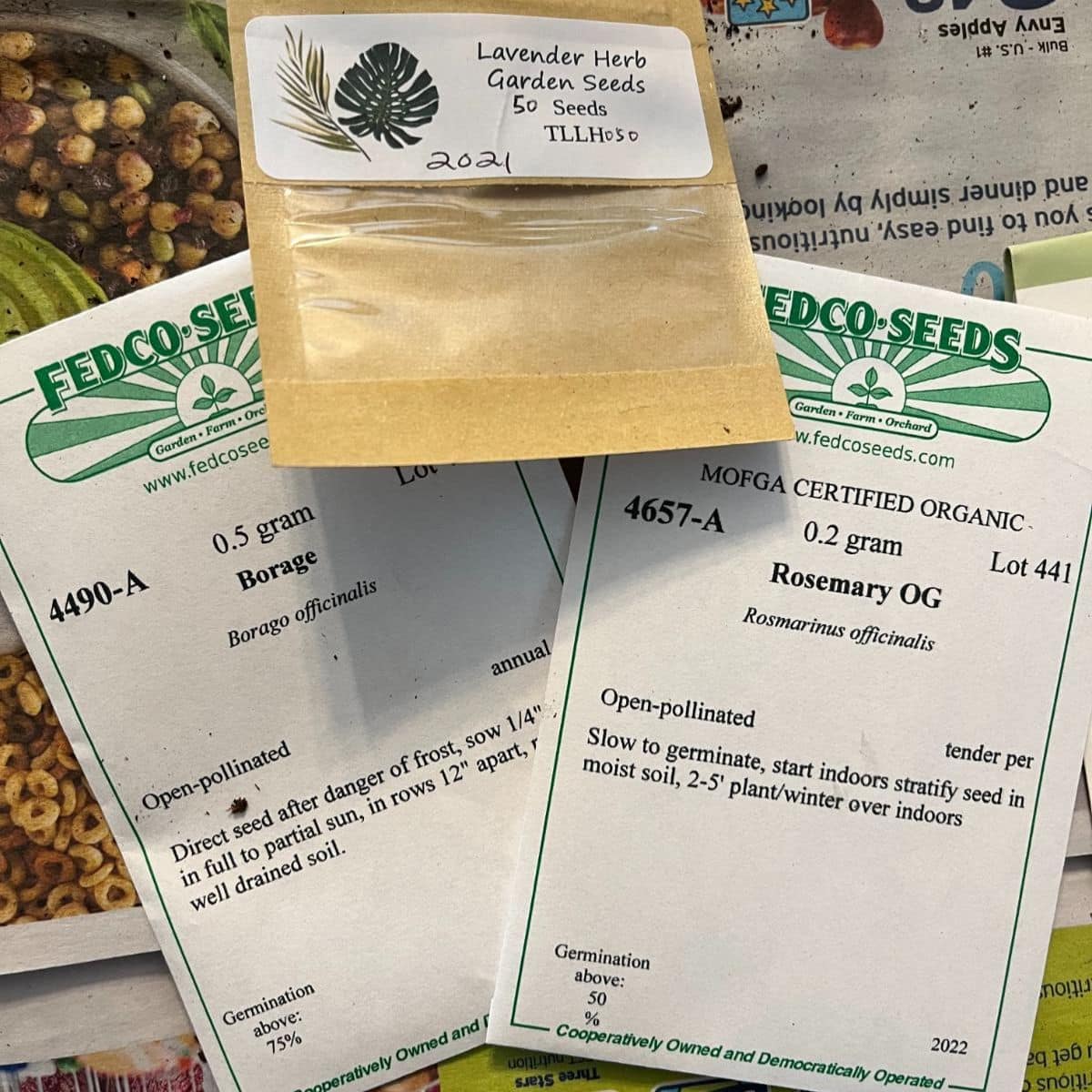
Mary Bales
I wonder if I should cut down some of the leaves as they grow throughout the season. If so how tall should I keep them.
Thank you very much.
Mary Ward
Many gardeners do choose to cut the tops during the growing season after the onions are planted. Doing so can result in bigger, better bulbs because more energy is sent to the bulb rather than the tops. One recommendation is to let the tops grow to about 9 inches, then cut half the tops off. Then let them grow to 12 inches, and cut half off. Then to about 15 inches, and cut half off. After that, leave them and let the onions complete their life cycle. Happy growing!
Les Daglish
Is it same using sets
Mary Ward
Yes. Trim them when the first leaves are about 5 inches.
valentine shale
Thank you. I have been growing them the wrong way.
Mary Ward
I wouldn't call it "wrong"--many gardeners do not trim leaves. Think of it more as a trick to improve your yield.
Moeketsi Nkone
This info was very helpful because i am doing the same research
william
Does this go for fall planted garlic sets also ? I live in zone 9 az and planted onion sets and garlic sets november 1 it is now the 30th and the tops are 9-10 inches.
Mary Ward
Usually the only advice for trimming garlic is to trim the scapes of hardneck garlic when they appear. When garlic is actively growing you can take one or two leaves per week per plant to use as green garlic, but it's not advised to take much more than that because the plant will need it for photosynthesis. That does sound like a lot of fall growth, though. But then, you're in a very warm location and garlic may continue to grow leaves throughout winter in warm zones. Typically you would not want to see that much shoot growth before it goes dormant. If you're expecting frosts and cold weather soon I would probably leave it but if not, you might want to try contacting a state university extension department for advice more local to your area.You can look up your AZ State university online and there should be an email and/or phone number for contacting for questions. You might dig up a plant or two and check for good root growth as well. In the early months your goal is more root than shoot development. Best to you and your garlic!
Mel Romans
Thank you so much for the detailed information. I’m off to great start and this helps my confidence going forward. I LOVE ALIUMS of all varieties.
Thanks!
Brian
Interesting article makes me hungry. Planted leeks March 8 with jalapeños on a heat mat in soil cubes kept moist under a transparent lid. Nothing showing after 11 days I’m afraid. It’s 80°f inside the grow box with the mat, is that too hot for leek germination? I know its required for jalapeños.
Mary Ward
Leeks have a germination temperature range of 75 to 80 F. Ten days is average for leek germination, though different varieties can vary. In my experience leeks germinate a bit easier than onions and they can also take longer than 11 days. Make sure the soil doesn't dry out. Don't give up on them just yet. Good luck!
Vinod Punj
You have given onion related information in an interesting and entertaining way; very schematic and lucid in manner.
That’s wonderful, thank you !!
Helen
Once the onion is in the ground and growing should I cut off any seed heads? Also will they grow in one season or do they need to stay in the ground for a second season? My autumn planted onion sets didn’t grow very big by the end of the summer. Should I have left them for another year?